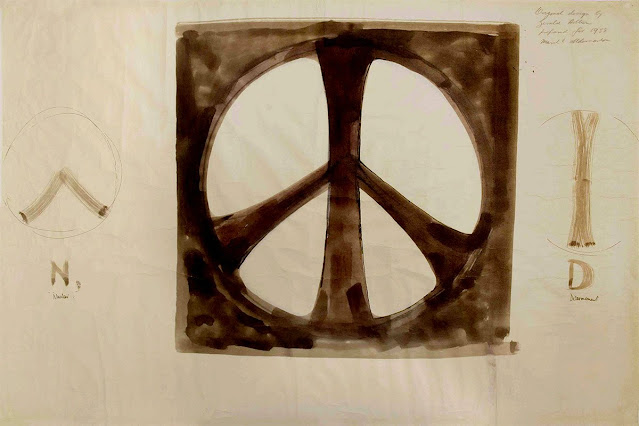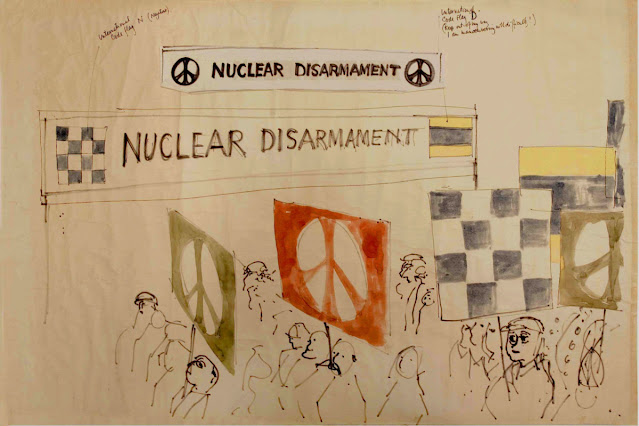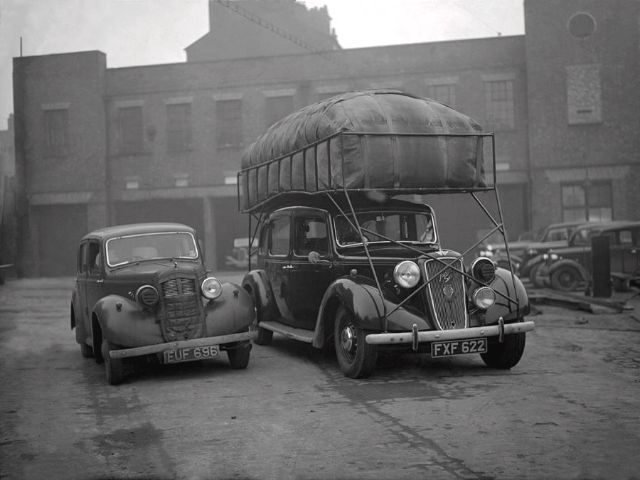The symbol now known internationally as the “peace symbol” or “peace sign”, or alternatively as the nuclear disarmament symbol, or the CND symbol (Campaign for Nuclear Disarmament) originates as a symbol representing the threat of nuclear annihilation used in British anti-nuclear activism from 1958. It was widely adopted in the American anti-war movement in the 1960s and was re-interpreted as generically representing world peace. It was still used, however, in its original anti-nuclear context by activists opposing nuclear power, in the 1980s.
The symbol was designed by Gerald Holtom (1914–1985) for the British nuclear disarmament movement. Holtom, an artist and designer, presented it to the Direct Action Committee on February 21, 1958 where it was “immediately accepted” as a symbol for a march from Trafalgar Square, London, to the Atomic Weapons Research Establishment at Aldermaston in Berkshire on April 4. Holtom’s design was adapted by Eric Austen (1922–1999) to ceramic lapel badges. The original design is in the Peace Museum in Bradford, England.
The symbol is a super-imposition of the flag semaphore for the characters “N” and “D”, taken to stand for “nuclear disarmament”. This observation was made as early as April 5, 1958 in the Manchester Guardian.

|
| Gerald Holtom’s preliminary sketches to incorporate semaphore letters into his anti-nuclear protest symbol. |

|
| The “N” and “D” semaphore signals that inspired the lines of the peace signs. |

|
| Gerald Holtom’s original sketches for his anti-nuclear protest symbol. |
In addition to this primary genesis, Holtom additionally cited as inspiration Francisco Goya’s The Third of May 1808: “I was in despair. Deep despair. I drew myself: the representative of an individual in despair, with hands palm outstretched outwards and downwards in the manner of Goya’s peasant before the firing squad. I formalized the drawing into a line and put a circle round it.”
The reference is to Goya’s The Third of May 1808 (1814), although the peasant shown in this painting has his arms stretched upwards, not downwards.
Ken Kolsbun, a correspondent of Holtom’s, says that the designer came to regret the symbolism of despair, as he felt that peace was something to be celebrated and wanted the symbol to be inverted. Eric Austen is said to have “discovered that the ‘gesture of despair’ motif had long been associated with ‘the death of man’, and the circle with “the unborn child’”.
The symbol became the badge of CND, and wearing it became a sign of support for the campaign urging British unilateral nuclear disarmament. An account of CND’s early history described the image as “a visual adhesive to bind the [Aldermaston] March and later the whole Campaign together ... probably the most powerful, memorable and adaptable image ever designed for a secular cause”.








